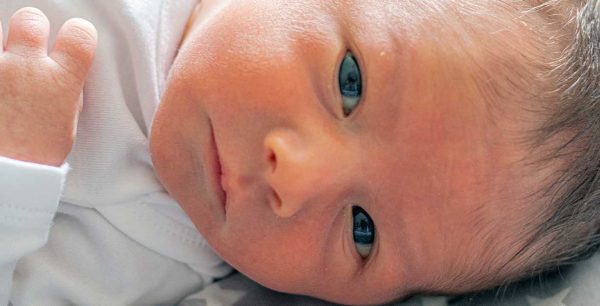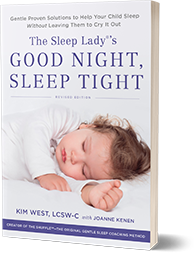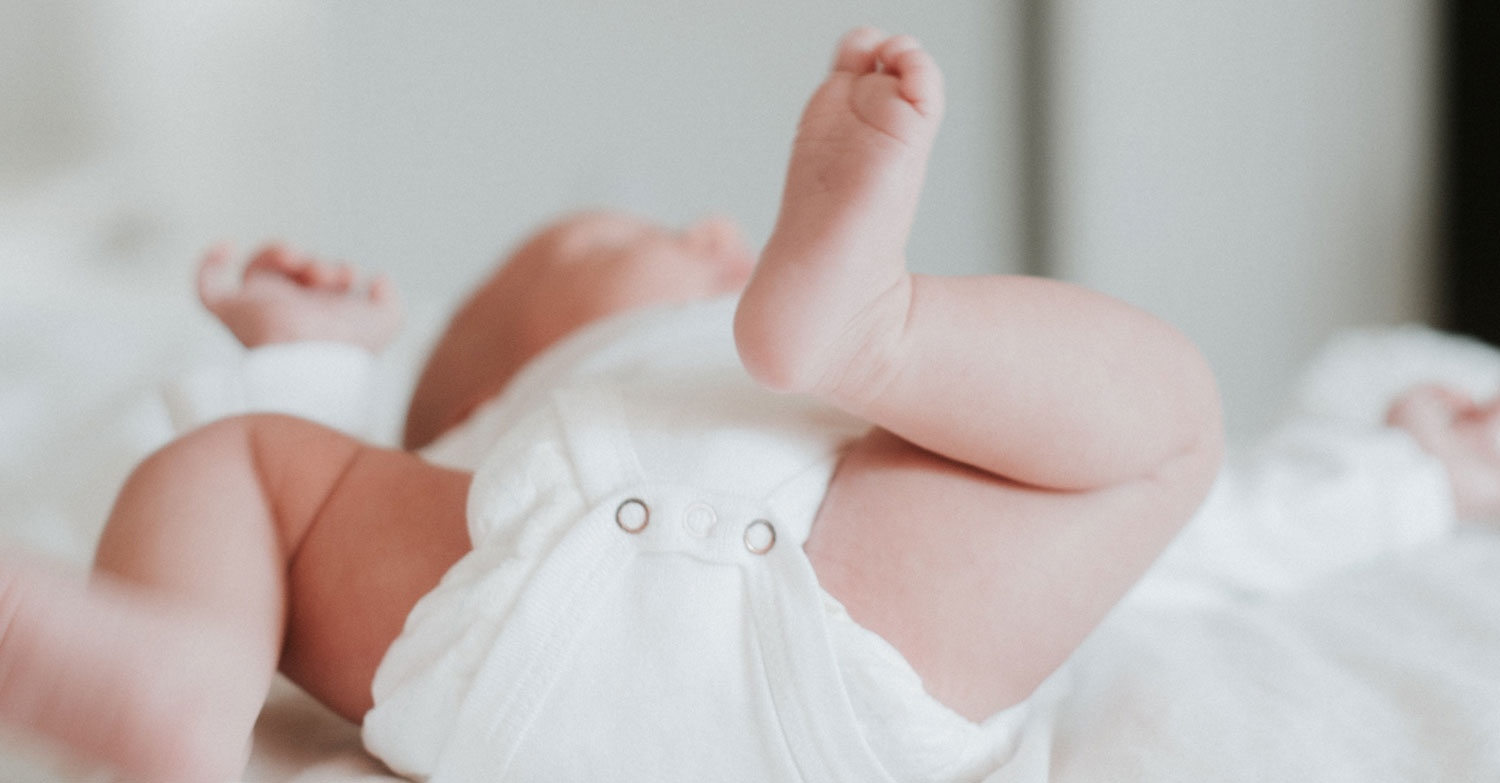Should I Swaddle My Newborn? Everything You Need to Know for Safe Swaddling
Whether you’re expecting for the first time or have just welcomed your first baby, it’s likely you have been overrun with parenting advice from all angles. Just about every piece of gear comes with a ten-page Google search worth of articles. This advice also changes, it seems, every few months. While you’re wrestling with a tiny human, blurry-eyed from joy (and sleep deprivation), a common first question is, should I swaddle or not?
Babies born in America come to you neatly wrapped in a sweet little burrito. Almost everyone takes that quintessential first photo of baby in a traditional hospital blanket. Same goes if you give birth in the UK. Canada, however, has slowly moved away from the practice, although many hospitals still teach it to new parents.. Why? It turns out there are well-researched pros and cons to the practice:
- Why swaddle?
- Swaddling concerns
- Safe swaddling
- Alternatives

Why Swaddle?
Swaddling is tightly wrapping your baby in a blanket to restrict the movement of his limbs. Wrapping in a swaddle is said to re-create the feeling of being in the womb, and can calm a crying baby. When you carefully wrap a very young newborn, it can help her to sleep without startling herself due to the moro, or “startle reflex”.
The main reason for swaddling is to try and get baby to sleep a little longer by keeping themselves from startling awake. Parents cherish the extra sleep that swaddling might offer.
Swaddling Concerns
As simple as it may seem, swaddling comes with risks as well as benefits. There are some major safety concerns that every parent should be aware of if you are swaddling your baby. These risks include SIDS, hip dysplasia and over-heating. However, if swaddling is done properly and safely, many of those risks can be avoided.
Wondering about newborn sleep habits?
Read: Newborn Sleep Schedule: What You Can Do for Some Sleep
Hip Dysplasia
Hip dysplasia can be present at birth, or can develop over time. Researchers have found that swaddling too tightly, or with legs and arms straight down, puts babies at a much higher risk of developing the condition and requiring treatment. For this reason, the International Hip Dysplasia Institute, while not condemning swaddling, is helping people learn a “hip-healthy swaddle”. Their recommended swaddling technique bends the baby’s legs up and out at the hips, rather than straight down.
Overheating
Babies don’t do a very good job regulating their body temperature. Just like they can get cold quickly right after a bath, they can overheat quickly. Overheating has been linked to SIDS, and experts see an increase during the colder months. Comfortable room temperatures and warm pajamas are usually enough, so swaddling on top of that can simply be too warm. In warmer climates or seasons, using a fan can help control the temperature too.
Sharing a room with your newborn?
Read: Room Sharing For The First Year: Is It Right For You?
Rolling Over
While a swaddled baby on her back is a safe sleeping position, all bets are off once she starts rolling over. Babies start rolling over somewhere between three and six months, although it can take longer to roll from back to front. Once your infant starts rolling—in any direction—swaddling becomes unsafe. At this point, transition your baby from a swaddle to a safe option like a sleep sack or just pajamas.

Access to Breastfeeding
One possible drawback of swaddling has been the belief that it hinders breastfeeding and skin-to-skin contact with mom. Skin-to-skin contact was first used for preemies, but is now generally believed to help all babies regulate their temperature and breathing, adjust to life outside the womb, and help trigger mom’s milk supply. The belief is that if a baby sleeps better when swaddled, he may not be getting frequent enough feedings early on.
That’s a pretty easy problem to solve. Some babies do feed better un-swaddled, and sometimes, swaddling can help calm a baby in order for them to feed better. If needed, swaddle to calm and then loosen or remove the swaddle to breastfeed. Once fed, swaddle your baby for sleep.
Any breastfeeding relationship is the result of mom and baby learning together—a mom learning her baby’s cues is the key to success. Each baby is different, and certainly it’s possible for breastfeeding an unwrapped baby and swaddling to coexist.
A Safe Way to Swaddle
There is some good news for parents of babies who enjoy swaddling. There are safe ways to reap the benefits of the swaddle without the risks. Here are some tips for swaddling your baby without worry:
- If you are using a traditional blanket, use a lightweight blanket designed specifically for swaddling.
- Wrap tightly enough that the blanket won’t come loose. Once the baby breaks out, swaddling with a blanket becomes unsafe.
- Make the wrap loose enough around his legs—a baby’s natural leg and hip position is up and forward, not pinned straight down. He should be able to move his hips and knees freely up and out. Using a swaddle sack can help assure the hips and legs are free.
- The arms should be wrapped tightly, but not too tightly. Avoid pressure on her chest.
- Always put the swaddled baby down on her back. When swaddling your baby for sleep, NEVER lay her down on her stomach or side. There is a high correlation between SIDS and babies who are swaddled and laid on their tummy or side to sleep.
- Make certain her face is uncovered. Any obstacle to breathing is unsafe for a baby.
- Do not use any type of sleep products like positioners or wedges.
- Monitor the baby when he is swaddled. Most people use a baby monitor, and a baby young enough to swaddle will likely wake frequently for feeding or attention.
- Watch the temperature. Set the thermostat to a comfortable adult temperature. Use one single layer of light pajamas and a light, breathable blanket or sack for swaddling. You may even use a fan if the baby or your room tends to get warm. If it’s hot, a diaper alone under the swaddle may be enough.
- Only swaddle to calm your baby or for sleeping. Unwrap your baby during wakeful periods for movement and activity, as well as during feedings.
Once a baby starts to show any signs of rolling over, swaddling becomes unsafe. At this point it is time to wean from the swaddle.

Wish I’d known about this book sooner!
"I feel so confident having this book to refer to and know that I can do this easily and in a short amount of time! You will not regret buying this book!"
Alternatives
The nurse makes it look so easy when she comes into the hospital room and swiftly swaddles your newborn. However, it can be a different story when you, your wiggly baby, and your blanket go home. For that reason, many manufacturers have designed pre-made wraps that make swaddling easy and safe.
Most of these baby wraps feature a sleepsack or bag on the bottom, for loose legs and hips, and a wrap-top closure for the arms. Companies like Love To Dream skip the wrap-top altogether and opt for a hands-up zipped sack. And for the baby who manages to escape the swaddle but still has the startle reflex, the Magic Merlin Sleepsuit offers the “input” or pressure of a swaddle with no danger of coming loose, since the arms and legs are free in the suit.
Need a swaddling alternative? Try this:
Read: Baby Merlin’s Magic Sleepsuit ® — The A-B-C’s of Sleep
Should I Swaddle? It’s a Parent’s Choice
Ultimately swaddling is one of the many choices new parents face. Of course, the baby has a say—some will sleep well when safely swaddled, and others won’t. For parents who do swaddle, doing so safely, and knowing when to wean from a traditional blanket, are an important part of the process.
Please keep in mind this information and research is based upon swaddling babies for sleep. It is not recommended that you swaddle your baby during her wakeful hours, as she needs time to move and explore her world and environment. If you decide that swaddling is not for you there are alternative techniques to help get your baby to sleep at night.


